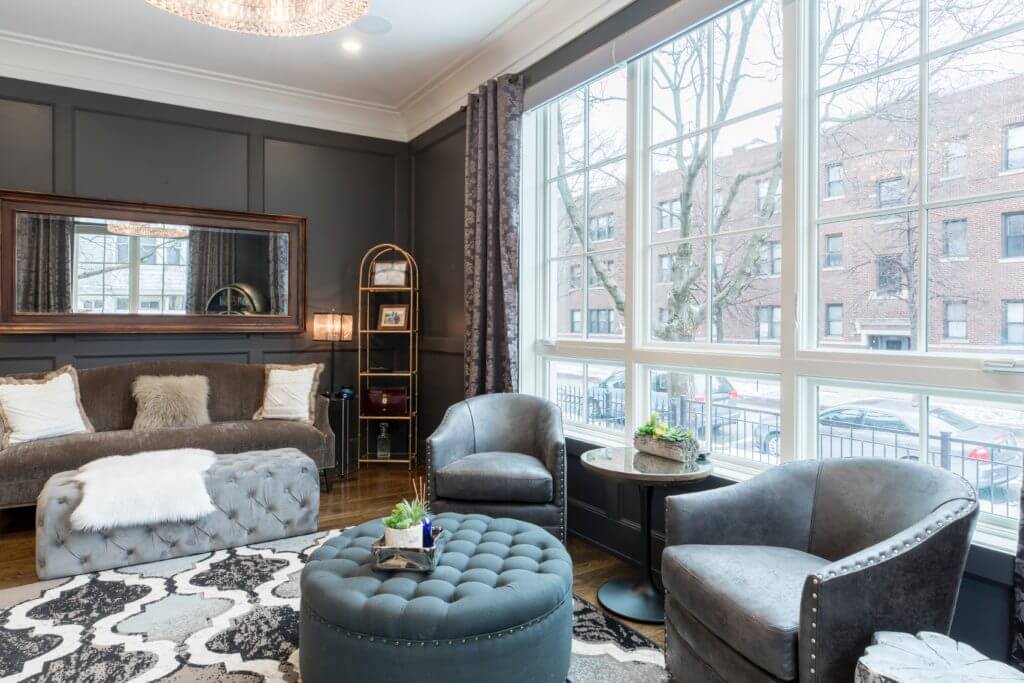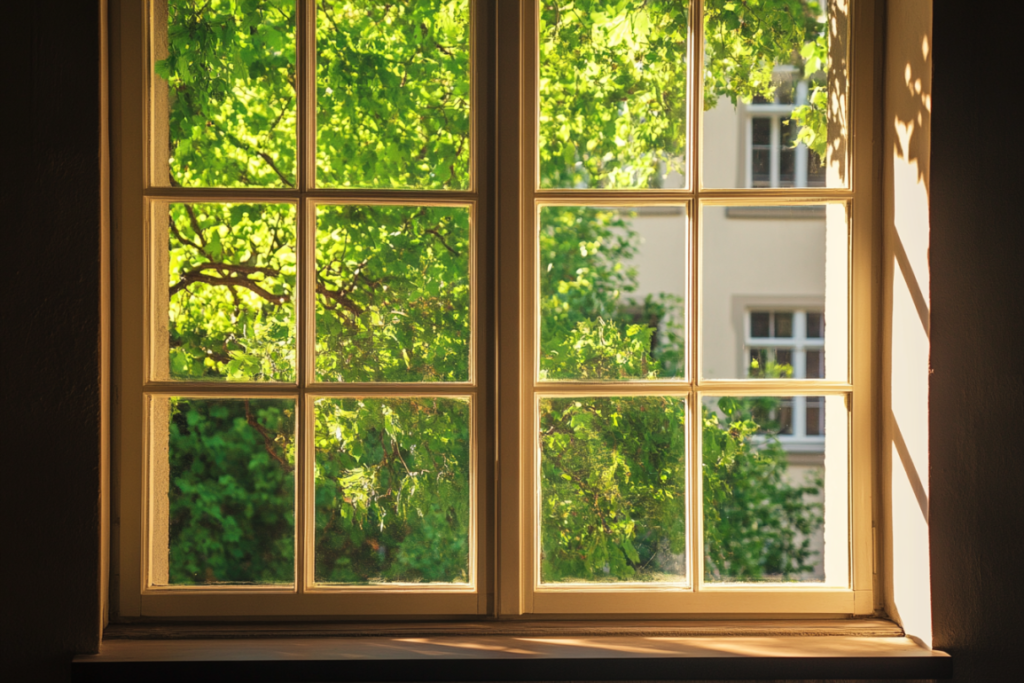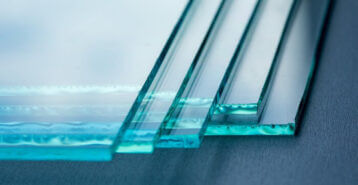Whether you’re addressing a recent crack in your window or there’s a stubborn draft you want to address, many things can lead you to look for the best window glass and alternatives. There are several alternatives to window glass that a homeowner might consider for costs, strength, and safety.
But what options are out there? And how do you narrow down the right materials for your lifestyle? We’ll break down everything you need to know about the best window glass alternatives.
What Is a Window Glass Alternative?

Different window materials fall into the alternative glass category. They include different types of plastic and acrylic versions that tout advantages including their durability. They resemble traditional glass.
In light of inflation and widespread material shortages, these alternatives are growing in popularity in modern home renovations. But on top of their accessibility and customizable options, glass window alternatives are growing in popularity because of their winning attributes: like being lightweight and less fragile than glass.
For those reasons, glass window alternatives are continuing to grow in popularity both in commercial and home settings.
What Are the Different Alternatives Available for Glass?
Let’s look at two popular types of plastic glass window alternatives: acrylic and polycarbonate.
Acrylic Glass/Plexiglass
Acrylic sheets — also known as fake glass or Plexiglass — are a popular alternative among home contractors because it is durable, strong, and lightweight. The sheets are made of a plastic blend. Contractors prefer them because, even if they break, they will not shatter. They are also easy to customize.
Polycarbonate
Engineers created polycarbonate to address contracting and engineering needs for glass alternatives that are incredibly strong, safe, and flexible. Original intentions included serving as a glass alternative for subways and bus shelters. This material is considered significantly stronger than acrylic and glass windows while still appearing clear. It is made from a mix of thermoplastic polymers with carbonates.

What Is the Cost of a Window Glass Alternative?
Because of their accessibility coupled with rising demand, the cost of glass window alternatives has increased in recent years. There are many misconceptions that the alternatives are cheaper than real glass. In reality, plastic glass is typically more expensive. But contractors say some of the advantages it poses — including serving as a quick option to retrofit a tricky size or having the strength to withstand extreme weather or safety risks — maintain the material’s popularity in home renovation projects.
The average glass window replacement costs between $200 and $400. This price varies drastically depending on the window type, material and customization options. A simple, standard, single-hung window could cost about $250.
In contrast, the average plexiglass window replacement could cost between $300 and $500 and the average polycarbonate window replacement starts at around $250. The price varies greatly depending on the size and style of your window replacement. Modernize recommends working with a contractor to discuss budget details and material costs.
What Are the Benefits of Window Glass Alternatives?
Efficiency
From an environmental perspective, acrylic, or Plexiglass, is considered an environmentally friendly plastic alternative because it can be recycled after use. Acrylic recycling is called “scrapping.” In scrapping, sheets are crushed, heated, and melted down into a liquid. New acrylic sheets can then be made out of that liquid.
Glazing and Insulation
When it comes to thermal efficiency, glass is still the best, but polycarbonate comes close while touting a lighter weight and more durability. And like glass, these plastic alternatives can also be glazed, or coated with various treatments to reduce the SHGC (Solar Heat Gain Coefficient), or the amount of heat let into a space. Beyond this, polycarbonate windows can be glazed with treatments that help counteract accidental breakage, vandalism, yellowing, or haze.
Strength and Durability
Glass window alternatives are an undeniable choice if a homeowner’s priority is for their windows to be as strong as possible.
To start, acrylic or plexiglass window sheets have 17 times the impact strength of a traditional glass sheet. This makes it an ideal choice for homes in areas that are prone to extreme weather and natural disasters that may cause heavy window impact, like hurricanes or tornadoes. In addition, while no window may be completely burglar-proof, acrylic windows are much harder to break than standard glass windows. They are also shatterproof.
Polycarbonate windows are stronger than acrylic or glass. Polycarbonate is said to be 250 times stronger than glass and 30 times stronger than acrylic.
Visible Light
When it comes to light transmittance, acrylic windows can transmit more light than their glass counterparts.
Acrylic sheets can transmit as much as 92% of light compared to traditional glass, which transmits between 80% and 90% of light.
As mentioned earlier, glass alternatives like polycarbonate can also be treated with different glazes and coatings to customize the amount of light transmission a window has. Still, acrylic sheets are considered more transparent than polycarbonate options.
Weight
Both plastic window options are significantly lighter in weight than traditional glass windows. For this reason, they are easier to transport and cost less money to ship. Acrylic windows weigh as little as half their counterpart. Polycarbonate windows are 10 to 20 times lighter than glass.

What Are the Drawbacks of Window Glass Alternatives?
While there are many notable advantages to opting for a glass window alternative, no product is perfect.
Some disadvantages include acrylic’s rigid qualities and its likelihood to chip or crack during installation. Acrylic glass is also not meant to be near open flames. Polycarbonate windows are less prone to cracking or chipping and are non-flammable. But they have their weaknesses. For example, polycarbonate windows can scratch and dent easily.
Are Window Glass Alternatives Right for Me?
From their easy malleability to their ability to withstand extreme force, glass window alternatives have a lot of appealing features. But that doesn’t necessarily make them a perfect fit for every household.
Modernize recommends speaking with a professional for the best options based on your home’s specific needs.
Compare top-rated windows pros in your area.
Read real homeowner reviews, explore qualifications, and view promotions. Modernize makes it easy to browse professionals and find one that will be perfect for your project.








